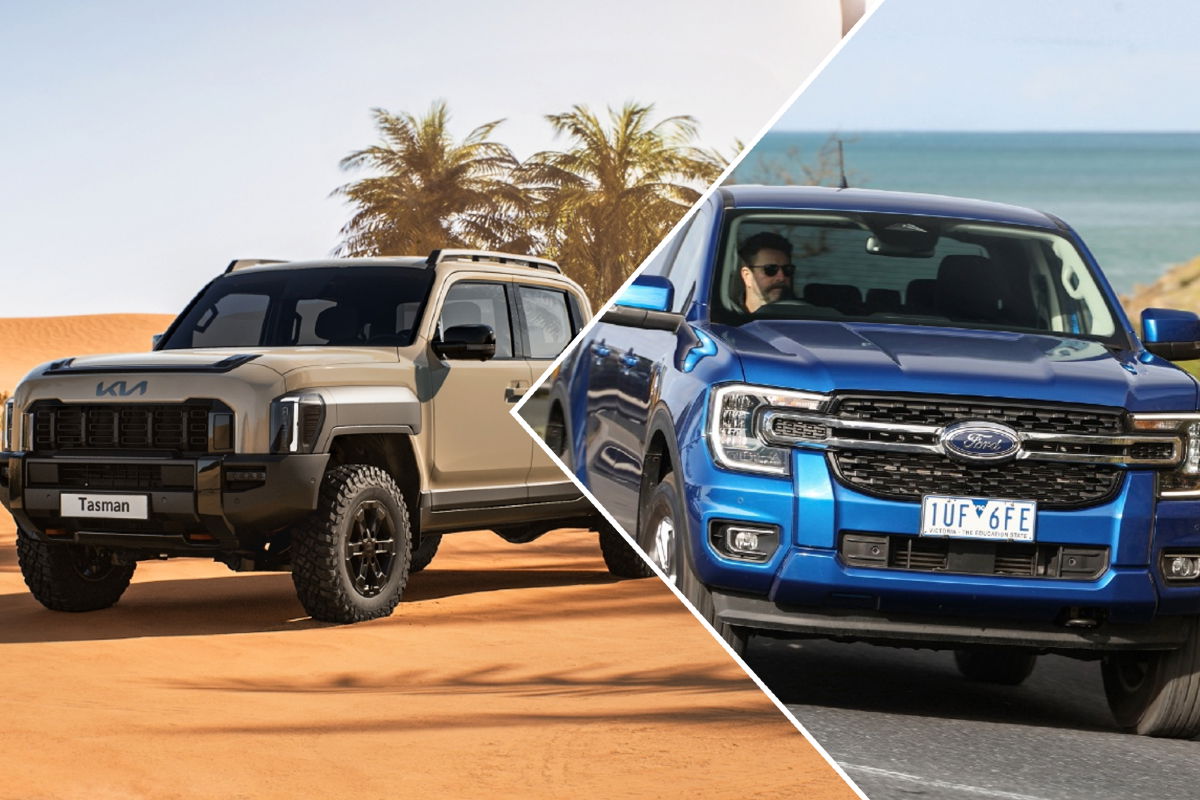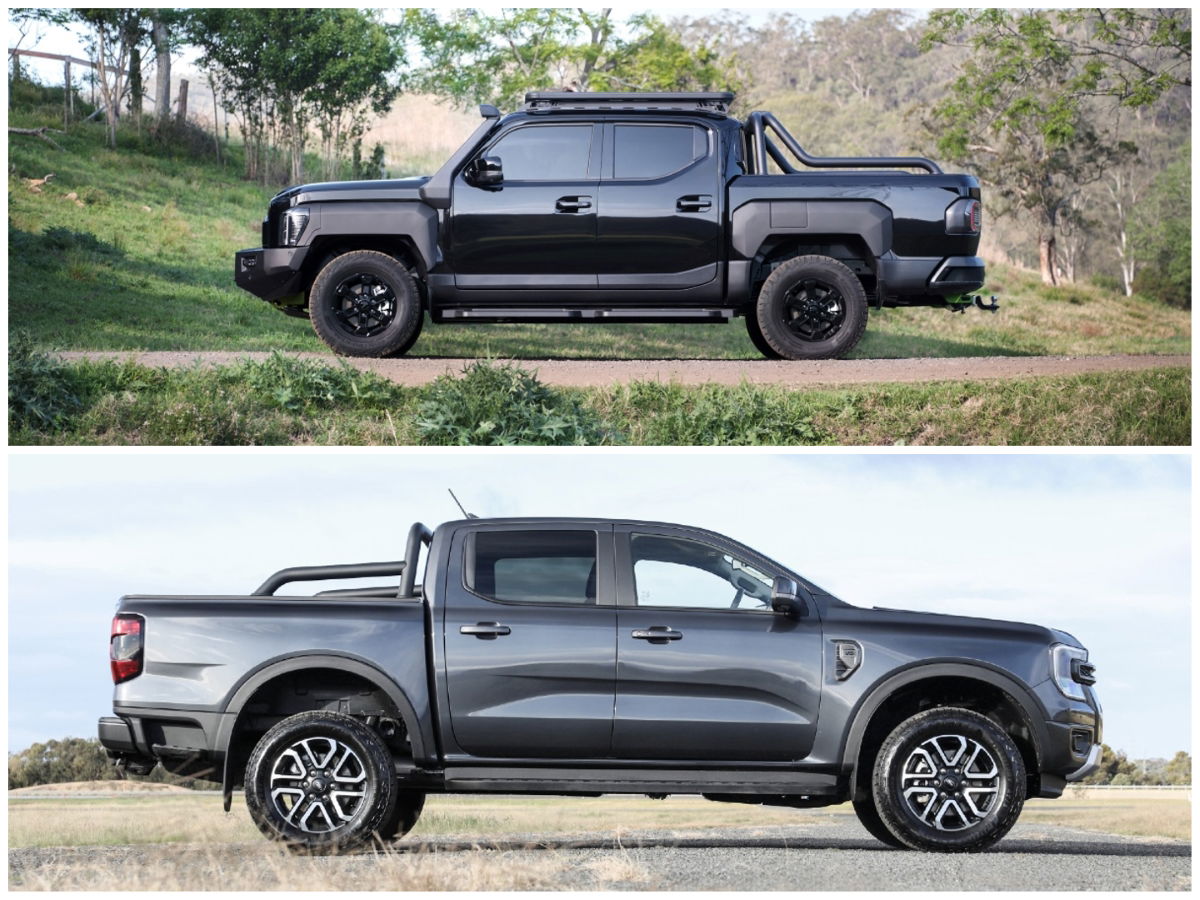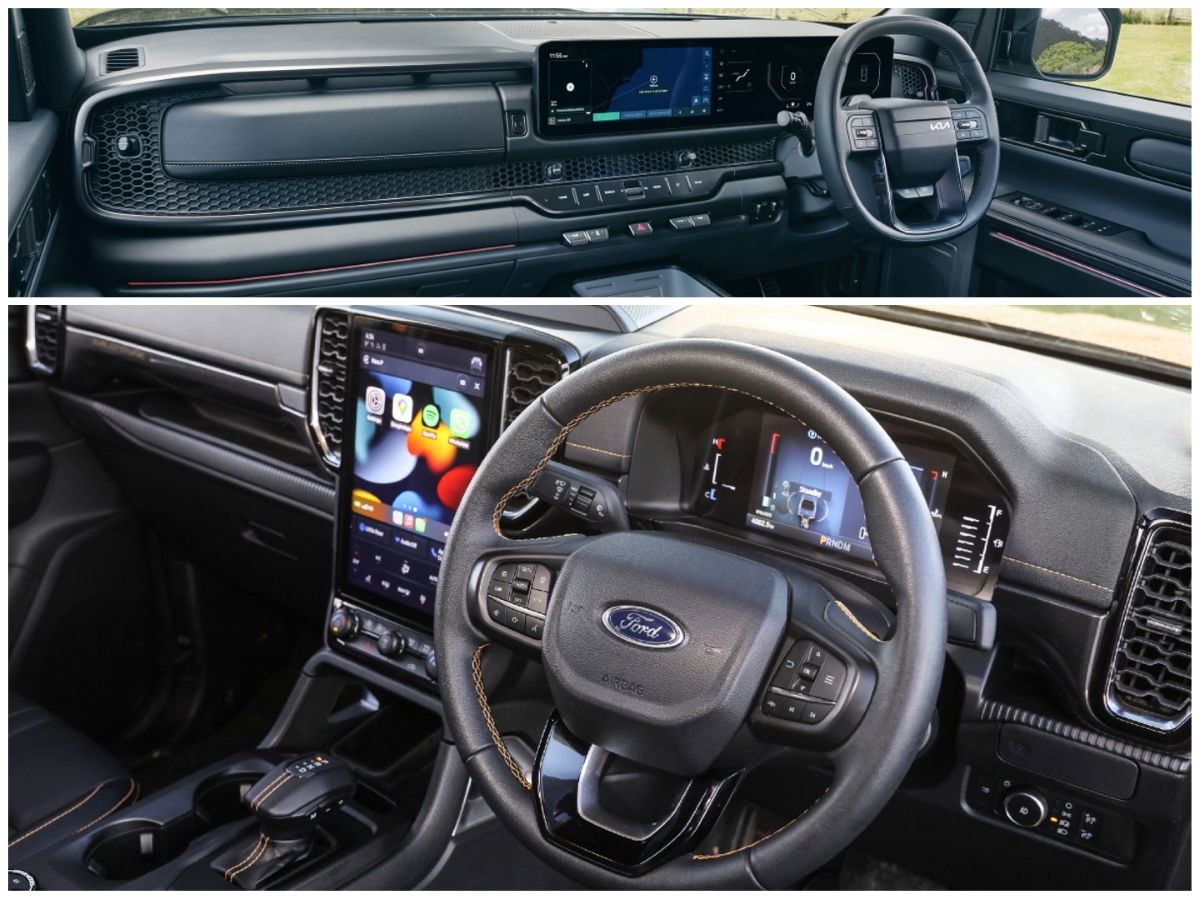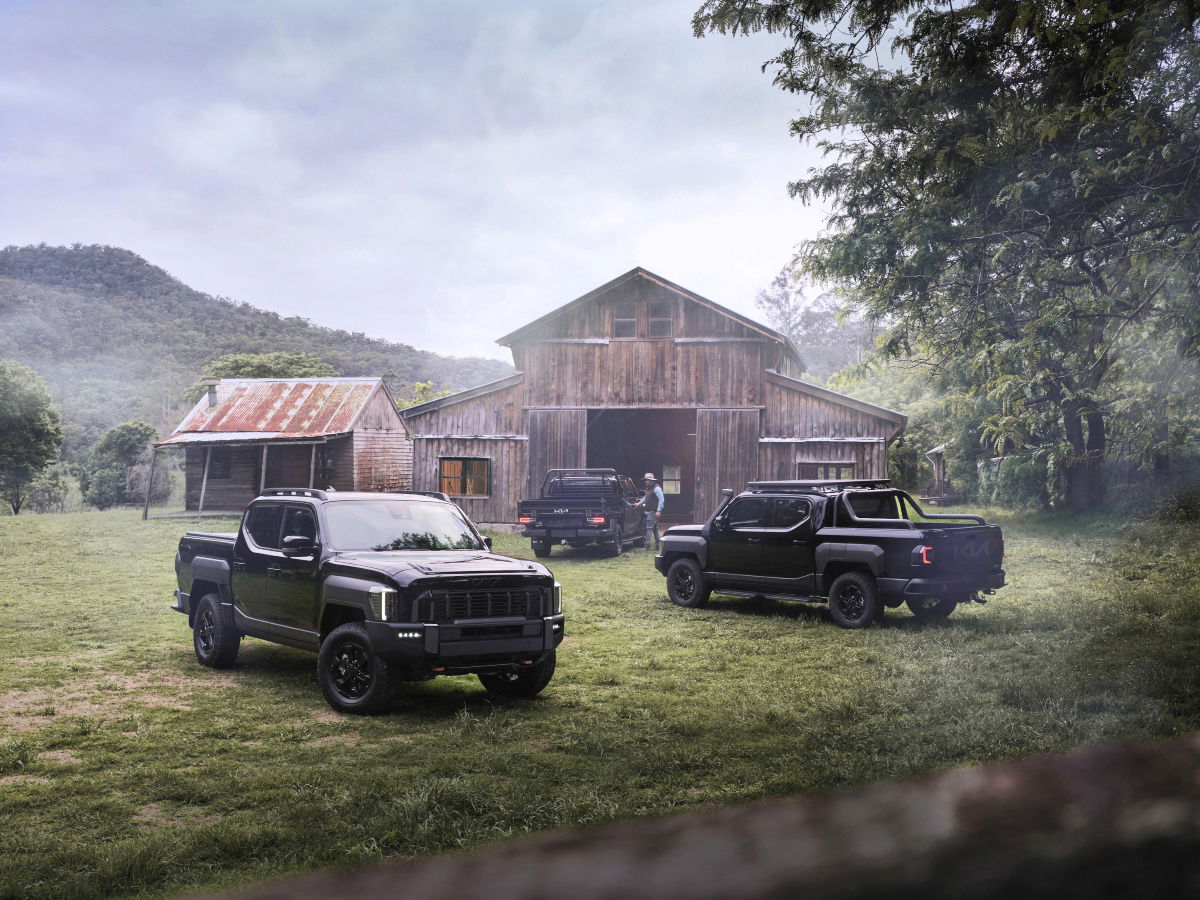
We’re still a few months away from driving the new Kia Tasman, but the official reveal of the new ute challenger does give us the chance to see how it stacks up to the competition.
Specifically the best-selling Ford Ranger, which has set the benchmarks in terms of performance and refinement that Australian ute buyers demand. So how does the Tasman compare against the Ranger? We’ve run our expert eyes over the details to give you an idea of how they’ll compare before we get behind the wheel of the Kia in 2025.
READ MORE: 2025 Kia Tasman – what you need to know
Performance
One of the big questions Kia faced when it revealed its new ute was the powertrain choice. The Tasman is powered by a 2.2-litre four-cylinder turbo diesel engine, which makes 156kW/441Nm and is paired to an eight-speed automatic and all-wheel drive. By comparison, the Ranger is widely available with a twin-turbo four-cylinder diesel that makes 155kW/500Nm of torque, paired to a 10-speed auto and part-time four-wheel drive. Then there’s the optional 3.0-litre V6 turbo diesel, which makes 184kW/600Nm.
While we can’t say the Tasman is underpowered or disappointing until we drive it, in the ute market image and the numbers matter to buyers, so it will take convincing to win buyers over with Kia’s numbers.
Winner: Ford
READ MORE: Has Kia built the ‘new Commodore’
Practicality

Kia was determined to ensure the Tasman was as practical and user-friendly as possible, so worked hard on delivering a big load area in the rear for both the cab chassis and the utility. The Tasman tub for the dual-cab model measures 1512mm long, 1572mm wide (with 1186mm between the wheels) and 540mm deep, which is enough to accommodate both an Australian pallet (1165mm x 1165mm) and a European pallet (1200mm x 800mm).
The Ranger measures 1464mm long, 1520mm wide and 525mm deep with 1217mm between the arches.
That means the Kia is longer, wider (both overall and between the arches) and taller and shows that the brand has paid attention to the details that matter for ute buyers.
Winner: Kia
READ MORE: Why the ute market is fracturing
Payload
With just a single powertrain option Kia has said all Tasman ute models will have a maximum payload of 1195kg.
In contrast, the Ranger has different payloads for its different engine variants. The most direct comparison to the Tasman is the 2.0L bi-turbo Sport variant, which has a rated payload of 1037kg. But if you move to the Wildtrak model, still with the bi-turbo, that figure drops to 997kg.
Again, we’ll reserve definitive judgement until we can drive the Tasman and feel how it performs with so much weight in the rear, but on paper it does have the edge.
Winner: Kia
Towing
This is a straightforward category as both models have a maximum braked towing capacity of 3500kg. However, once again we’ll put the caveat that there’s a difference between on-paper performance and real-world pulling power.
Winner: Tie
Technology

One of the key reasons for the Ranger’s popularity was Ford’s decision to push the ute as the new family car, introducing a more premium, SUV-like interior. That’s especially clear on the latest generation, where even the entry-level XL model has a 10-inch tablet-style touchscreen for all the infotainment controls, while the higher grades get a 12-inch screen. The Ranger also has a digital instrument panel and changes to the steering wheels, switchgear and more soft-touch materials, especially on the higher grades, to give it a less ‘workhorse’ look and feel inside.
Kia has taken that to the next-level on the Tasman with a cabin design that looks more modern than anything else in the ute segment today. There’s huge twin 12.3-inch digital screens paired together to create a widescreen display for the dashboard and infotainment. But it’s not all just glamour, the centre console is equipped with a fold-out work table for drivers to use when parked, which is something none of its rivals can offer.
Winner: Kia
Verdict

We’ve already said it multiple times, but we need to reserve final judgement until we drive the Kia to see how it really stacks up. The good news is, on paper at least, the Tasman has the potential to compete with the Ford Ranger, as our specification comparison shows.
Of course, there are a lot more elements than just these criteria, but as the core elements of a ute, these do showcase some of the strong features Kia has built into the Tasman. Perhaps the most interesting element of these two is how ‘Australian’ they both are, with Ford Australia leading the development of the ‘T6’ platform and Kia Australia given more scope than ever before in the development of an all-new model.
Stay tuned for our first drive in the Tasman sometime in 2025…













Discussion about this post